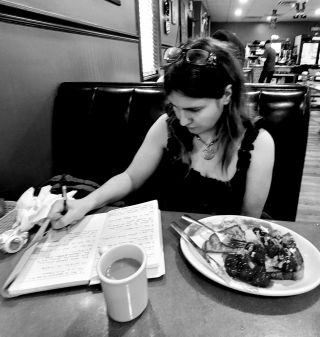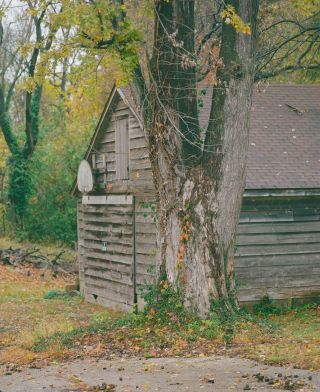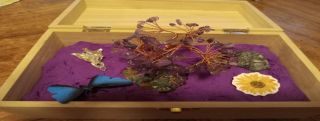Autism
Connection Across a Lens: Expression Through Photography
Could photography offer opportunities for autistic folks to connect?
Posted March 20, 2024 Reviewed by Davia Sills
Key points
- Photography provides a means of expression and connection for individuals of all abilities to engage in.
- Research with photovoice, a photo method of expression, engaged autistic participants, including non-speaking.
- Psychotherapy can utilize photography to assist with expression and skills development.
"I don't want to wear a mask." — Tom Warner
Tom is perhaps the first fellow neurodivergent person I met. We met when we were both around 11 years old, shortly after my parents had told me that I had been diagnosed with Asperger's Syndrome, something I had little understanding of at the time. Throughout our friendship, Tom's directness and courage to jump into the deep realms of creative projects enchanted me. When Tom offered an interview regarding photography and autism, I graciously accepted.

As we spoke, Tom shared about his photography and the pathways through which it has helped him to connect. Like many neurodivergent people, including myself, relating in a world set up for neurotypical people has been a struggle at times for Tom. He shares, "All these stupid rules they make up with social interactions that you have to go from A to B to Alpha to X to the power of blah blah blah. I don't copy. People don't always understand you; you don't understand yourself."
Yet, photography has given Tom an outlet to express himself. He shares, "Humans are naturally driven to create things. When we deny ourselves that, all we are is miserable. It's a deeply powerful experience." As we conversed over coffee and breakfast, Tom stealthily took a picture of me. "This is you creating." I felt that.
He discussed how photography has given him a way to express: "a reflection of how I feel being among people sometimes, shadows and figures that I don't know." His interest in street photography has been especially relevant here. As he leaned over to show me picture after picture, I felt I understood just a tiny bit more of the world through Tom's eyes.

Photography and Autism
Tom is not the only autistic person who has found photography to be a resource. As is well illustrated by Temple Grandin's contributions, visual thinking patterns are common in autism. Sometimes, it's easier to relate through pictures than words, making photography an ideal means of expression.
In a study published in 2022, four autistic men provided photographs they had taken and were interviewed to explore their experience. This qualitative study provided insights into how these individuals experience the world (Klein, 2022). That same author conducted a subsequent study, finding that the participants could utilize the camera as a conduit to express their perceptions of the world and communicate these (Klein, 2023).
Photovoice and Photography in Autism Research
Photovoice is a particular means of artistic expression involving combining words and pictures. It has been used both as an intervention to assist autistic people in connecting with others and in research that dives into the autistic experience. A review of 11 studies found that photovoice gave autistic participants ways to contribute their perceptions, something particularly relevant for non-speaking autistic participants who often have not been able to discuss their experiences within traditional frameworks (Do et al., 2021).

One particular study involving photovoice with adult women navigating the diagnostic process for autism found several themes. Among these were expressions of autistic identity and the process that the system often puts people through. For many, the diagnostic process can be intense and emotional, particularly for late-diagnosed individuals. These women could discuss experiences of understanding, judgment, dismissal, and validation through images.
Photography in Therapy
Photography is something I have found healing at times. I might set up a small scene of figurines, gems, and other objects within a sandbox, somewhat similar to sand tray therapy. I snap a picture. It creates a timestamp for aspects of my life.
Therapists have also integrated photography as a means of expression and skills practice. A simple example could be assigning clients to take a few photos of "moments" throughout the week. Such an activity is a practice of mindfulness.
A small study that assigned a group of autistic individuals to work together to create a film portraying their stories found improvements in self-confidence, awareness, and social connection afterward (Saladino et al., 2020). The benefits are not limited to adults: Research that involved teaching 5-16-year-old autistic youth photography as a leisure activity observed the benefits as well (Tsai, 2019).

Conclusion
I am appreciative of Tom sharing his passion with me. Photography as a means to augment autistic voice is encouraging, as is its potential utility in therapeutic processes. For too long, autistic voices have been under-represented in research and gone unheard within the community, augmenting a sense of disconnection and loneliness that poses threats to autistic well-being. Film and photography could give us a way to reverse this pattern.
References
Cage, E., Botha, M., McDevitt, L., King, K. N., Biscoe, L., Tucker, K., & Pearson, A. (2024). Diagnosis as a new beginning not an end: A participatory photovoice study on navigating an autism diagnosis in adulthood. Autism, 13623613231220418.
Do, P. L., Frawley, P., Goldingay, S., & O’Shea, A. (2021). The use of photovoice in research with people on the autism spectrum: A meta-synthesis of the literature. Research in Autism Spectrum Disorders, 87, 101828.
Klein, Us (2022) "Seeing and communicating: photography and young male adults with Autism Spectrum Disorder." Visual Communication 21.4 581-606.
Klein, U. (2023). No selfies: the social world of autistic male adults as depicted in their everyday photographic practices. Visual Studies, 38(1), 17-33.
Saladino, V., Sabatino, A. C., Iannaccone, C., Pastorino, G. M. G., & Verrastro, V. (2020). Filmmaking and video as therapeutic tools: Case studies on autism spectrum disorder. The Arts in Psychotherapy, 71, 101714.
Tsai, A. (2019). Teaching the leisure skill of photography to children with autism spectrum disorder.




